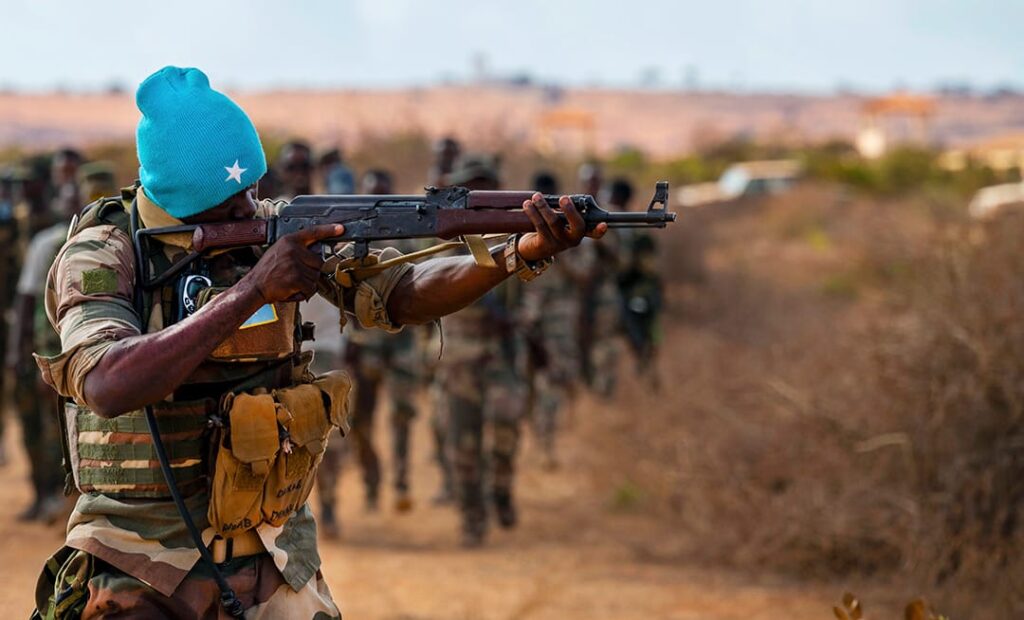Despite billions of dollars in international aid, Somalia security crisis as is severe its national army struggles to contain a powerful, months-long offensive by the Al-Qaeda-affiliated group, Al-Shabab.
The insurgency’s recent gains have reclaimed significant territory, exposed deep-seated issues within the Somali military and government, and triggered growing fatigue among international donors.
Somalia security crisis represents a perfect storm of a demoralized army, political infighting, and declining foreign support, reversing hard-won victories and casting a grim shadow over the nation’s stability.
A Resurgent Al-Shabab: The Scale of the Counter-Offensive
After a successful government campaign in 2022-23 that liberated some 200 towns and villages, Al-Shabab has launched a devastating counter-offensive.
According to Rashid Abdi of the Sahan Research think tank, the insurgents have already regained an estimated 90 percent of their lost territory.
Key defeats for the government include:
- The fall of Moqokori: Retaken on July 7, this town’s capture gives Al-Shabab a strategic position to launch attacks into the Hiiraan region.
- Loss of stabilized towns: Locations once considered models of stabilization, like Masaajid Cali Gaduud and Adan Yabal, have fallen back under insurgent control.
- Destruction of infrastructure: Three crucial bridges along the Shebelle River, vital for military supply lines, have been destroyed.
“The whole stretch from the north-west to the south-west of Mogadishu is now controlled largely by Al-Shabab,” Abdi told AFP, highlighting the scale of the government’s territorial losses.
Why is the Campaign Faltering? A Collapse on Two Fronts
Somalia security crisis and the military setbacks are not due to a single cause but rather a combination of failures within both the local militias and the national army.
The Disintegration of Local Militias (Macwiisley)
The government’s initial success relied heavily on local clan militias known as the “Macwiisley.”
However, this alliance has collapsed.
Experts argue that the government of President Hassan Sheikh Mohamud (HSM) mismanaged these crucial relationships.
“The government… was extremely inept at working with the clans,” said Abdi, noting that it empowered some groups over others based on political favoritism instead of military necessity.
This created disorganization and eroded the unified front that had been so effective.
Somalia Security Crisis with the National Army
The Somali National Army (SNA) has been unable to fill the gap left by the militias which exaggerates Somalia security crisis.
Described by analyst Omar Mahmood of the International Crisis Group as a force “still in development mode while trying to fight a war,” the SNA is plagued by systemic issues.
- Lack of will: Experts observe an army that is “not just dysfunctional, but losing the will to actually fight.”
- Ineffective structure: Its most elite unit, the US-trained “Danab” commandos, excels at targeted killings but struggles to hold territory.
- Leadership losses: The Danab unit has also suffered demoralizing losses to its officer corps.
Political Infighting and Unrealistic Goals
The military’s struggles are a direct reflection of Somalia’s chaotic political landscape, where clan-based divisions have prevented the formation of a national consensus.
Instead of focusing on strengthening the armed forces, President Mohamud’s administration has prioritized holding the country’s first one-man, one-vote election in decades, planned for next year.
However, observers see this as dangerously unrealistic.
Can the Economic Power of Al-Shabab Affect Somalia Security Crisis?
While the government struggles, Al-Shabab continues to thrive.
The group has established a powerful economic network that underpins its military operations.
“It out-taxes the state. Its business tentacles spread everywhere,” said Abdi.
“It is one of the wealthiest insurgencies in Africa.”
The group’s pervasive presence is felt even in Mogadishu.
Pot-shots targeting the airport are at an all-time high, and President Mohamud himself narrowly survived an attack on his convoy near the presidential palace in March.
Waning International Support and Donor Fatigue
Somalia’s security has been propped up by foreign partners for years.
The European Union and the United States have contributed over $7 billion since 2007, primarily funding African Union-led military missions.
However, patience is wearing thin.
The latest AU mission had to be immediately replaced by a new one—dubbed AUSSOM—because Somali forces were not ready for the security handover.
“There’s a huge amount of donor fatigue,” said the diplomat.
“People are asking: ‘What have we bought for the last 10 years?’”
This fatigue translates into funding shortfalls.
AUSSOM mission is expected to receive only two-thirds of its required funding for 2025, a chronic shortfall that jeopardizes its operations.
Somalia Security Crisis Will Continue
With a resurgent Al-Shabab, a fractured and demoralized military, a divided political leadership, and dwindling international resolve, Somalia security crisis hides a deeply uncertain future.
As expert Rashid Abdi warns, “We are staring at a very grim situation.”
Without a fundamental shift in strategy and a unified national effort, the country’s hard-won progress against extremism is at risk of being completely undone.


